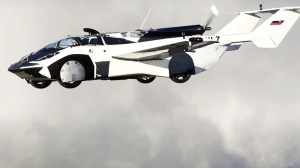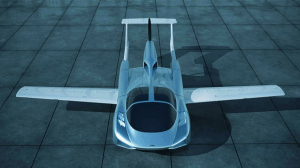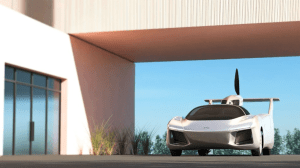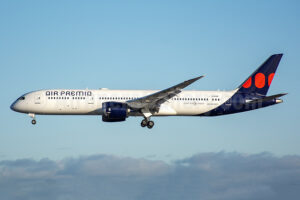Morgan Freeman wasn’t quite sure about whether the world’s first certified flying car will really take off in the real word. Freeman, along with two-time Oscar winner John Travolta, presented Slovakia-based Klein Vision with a Special Recognition Award for Engineering Excellence at last month’s 2025 Living Legends of Aviation Gala Dinner in Beverly Hills, Calif. The event recognizes advances in flight, exploration, and personal air mobility.
But Freeman wasn’t buying it, at least not initially. “Anybody can come to our shop and see the AirCar flying,” Anton Zajac told the actor, who also has an Oscar. Zajac, who cofounded Klein Vision in 2016 with Stefan Klein, told Robb Report that Freeman came closer to accepting the AirCar’s reality by the end of the conversation.
The AirCar promises to shorten flight times between cities by letting you take off from your home.
Klein Vision
When it comes to skepticism about flying cars, Freeman’s not alone. The history of the flying car has had one or two successes—including the Aerocar which made it into production, barely, in the 1950s, and of course, The Jetsons’ famous bubble-top commuter—but most attempts have failed over the years. Now, a half-dozen manufacturers are trying to bring their versions of a flying car to market. The offerings include the Pal V Liberty, Samson Switchblade, Aska A5, Alef Model A, and Doroni H1X. Like Klein Vision, they are small firms with limited resources, attempting to bring their aircraft to market while facing multiple technical and regulatory challenges. All are in different phases of development.
Klein Vision says it’s on the brink of breaking into the real world, with plans to commercially introduce its AirCar in the first quarter of next year. That will come after test-flights of the second pre-production prototype happen in the fall. That’s the culmination of a long journey for Klein, who has designed five generations of ever-more sophisticated flying cars since 1989. Zajac has been his partner for nearly a decade. “We were cautious when we started the [AirCar] project,” says Zajac, referring to the first prototype. “The goal was to get proof of concept and proof of geometry and come up with something we could fly.”

The first prototype of the AirCar doing an intercity flight in 2021.
Klein Vision
Since its maiden flight in 2021, the first prototype has completed 170 flight hours, with more than 500 takeoffs and landings. The second version will be 440 pounds lighter, thanks to a more advanced composite construction method. Its small aircraft engine from Adept has FADEC (full-authority digital engine controls) that regulate engine performance for easier flying.
“This will climb and fly faster than the first prototype and we’ve put in a larger cockpit,” says Zajac. The AirCar will also include Garmin avionics and is autopilot ready. Its flight range will be about 620 miles, he explained, and about 500 miles on the ground. After being tested for 50 hours, it will be eligible to receive an EASA airworthiness certificate, which allows Klein Vision to put it on the market in Europe. Long-term plans include distribution in Asia and North America. The price will range between $800,000 and $1 million.

In flight mode, with wings out.
Klein Vision
Zajac sees a market for commuters who want to eliminate airports and fly between their homes and other unrestricted landing spots.
Klein is even thinking bigger. “The AirCar fulfills a lifelong dream to bring the freedom of flight into the hands of everyday people,” he said during the ceremony. “With the launch of our production prototype, we are one step closer to transforming how the world moves—merging the road and the sky into a new dimension of personal mobility.”
One can imagine that Freeman just smiled.
Credit: robbreport.com










